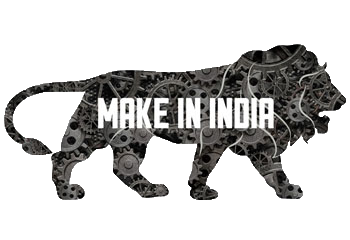Pullers are important instruments in lots of fields, such as car fixing to production and building. They assist with taking out bearings, gears, pulleys and other parts that may be firmly fitted or stuck. Choosing the correct puller for your requirements is crucial because different types of pullers can greatly affect the speed and success in your job. In this blog, we will study various types of pullers and talk about the important elements you should think about when choosing one for your needs.
Also Read: How to Select a Hydraulic Puller Safely
Types of Pullers
Gear Pullers
Gear pullers, also recognized as bearing pullers, are one of the most frequently used kinds. Usually, they have two or three changeable arms that hold onto the part you want to take out and a forceful screw in the center which applies pressure for extracting it. Important details to think about are: how many jaws there are, what is their capacity and reach; what length and diameter does the forcing screw have? Also we must consider the overall construction quality of the tool along with its durability factor.
Hydraulic Pullers
Pullers that are hydraulic utilize hydraulic pressure to produce substantial force for extracting powerful components. This type of puller is best suited for extensive applications where the use of manual strength alone would not be enough. When choosing a hydraulic puller, you should think about its capacity in tonnage, length of the stroke from your hydraulic cylinder, what kind of pump it has (manual or electric), and how portable it is.
Slide Hammers
Slide hammers are tools that have a long stick with a heavy item on it. People can make strong hits by moving the weight back and forth along the stick quickly, which helps to take out parts. Things you should pay attention to are: how much the whole thing weighs and its balance, how long and thick is the stick called shaft, what attachments can be used with it, as well as grip design for comfort when using it.
Internal Pullers
Internal pullers, as their name suggests, are used for taking out bearings, bushings and other parts from inside. These tools grow bigger within the part that needs to be taken off, then they pull it out. We should think about size range and adjustability of internal pullers. They also have an expansion mechanism, how much pulling force they can handle and if they are compatible with different internal diameters.
Separator Pullers
Separator pullers, also known as splitters, are utilized to separate two closely connected parts. For example, a ball joint is detached from the steering knuckle by using this tool. While picking separator puller take into account the jaw opening range, maximum spreading force it can apply, adjustability and general construction quality.
Hub Pullers
The tools that we call hub pullers are made especially for taking off wheel hubs, brake drums and similar parts in automobiles. When you choose one, important aspects to consider are if it is compatible with certain vehicle makes or models, adjustable for different bolt patterns, overall strength and how easy it will be to use.
Also Read: The Role of Hydraulic Pullers in Heavy Equipment Maintenance
Key Features to Consider
For your particular needs, you should consider these crucial aspects when choosing a puller. The capacity and force of the puller is significant. Make certain that the tool can produce enough force to extract parts without harming them.
- Versatility and adjustability are also important. Look for pullers that can be adjusted in terms of jaw opening, reach and compatibility with different components. This versatility can make your tool more valuable across various applications.
- Long-lasting and dependable tools depend on the material and how well they are built. Choose tools made from good-quality materials, such as forged or heat-treated steel, and consider the finish and general construction.
- Your work efficiency can be influenced by how easy it is to set up, change and operate the puller. Features like quick-adjust mechanisms and ergonomic handles can make a big difference.
- Safety is very important. Make sure you select pullers that have functions such as overload protection and safety shields. For hydraulic pullers, check for pressure relief valves and proper sealing to prevent leaks.
- Think about the portability, it can be an important aspect as per your requirement. Check the weight of the puller and if it comes with a carrying case. For larger hydraulic units, check if they have wheels or handles for easier transport.
- There might be applications that need unique features like heating parts for thermal expansion or very long reaches to get into difficult areas. Think about your special needs when choosing it.
- Lastly, think about the brand’s reputation, guarantee and total cost-effectiveness of the puller. Although it might be attractive to select the less costly option, a higher-quality puller could offer more value over time due to its ruggedness and efficiency.
Conclusion
The puller you select can greatly affect how efficiently and effectively your work is done. Knowing the various types of pullers, along with important characteristics such as capacity, versatility, build quality and user-friendliness helps in choosing a puller that best suits your needs. It’s good to keep in mind that having various kinds of pullers available for use may be an advantage as it lets you pick the most fitting tool for each task. Selecting the appropriate puller(s) by investing time in research can enhance the quality of work, boost productivity and possibly save money over time.

